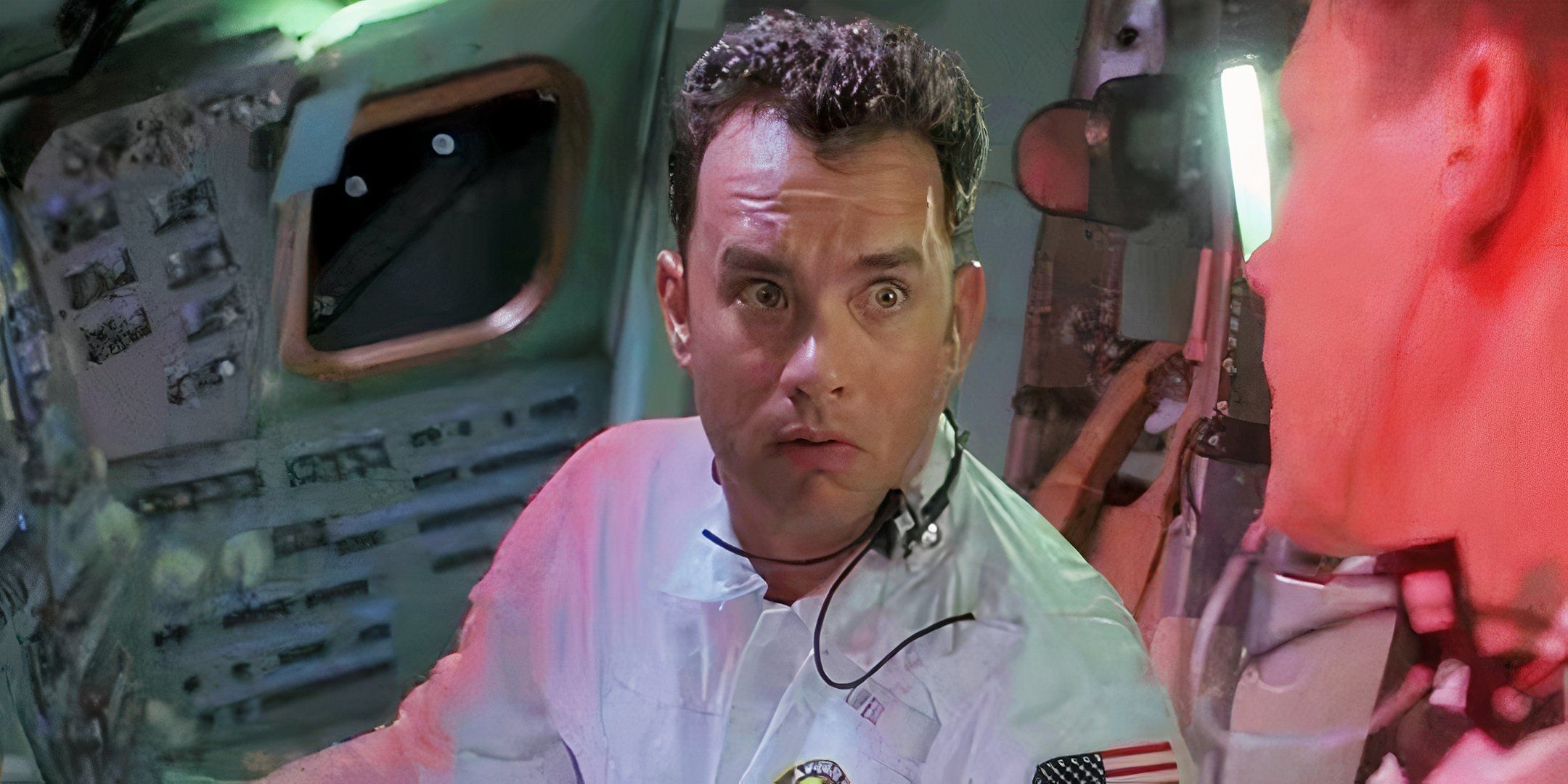
A real astronaut explains how Apollo 13 It perfectly portrays the aborted 1970 moon mission. Directed by Ron Howard, the 1995 film follows the aborted moon mission in which an explosion aboard Apollo 13 paralyzes the spacecraft, severely reducing its oxygen supply and electrical power. As a result, NASA flight controllers abandon the Moon landing plans and quickly devise creative scientific and mechanical solutions to bring the three astronauts home safely. The film stars Tom Hanks, Kevin Bacon, Bill Paxton, Gary Sinise, Ed Harris and Kathleen Quinlan.
In a Insider video, retired NASA astronaut Nicole Stott watched and evaluated the realism of how outer space is portrayed in films, including what went wrong with the mission's lunar module and how the crew returned to Earth in Apollo 13. Stott reviewed scenes in which, with the spacecraft's navigation systems disabled, the crew begins to manually steer the Lunar Module, re-enter Earth's atmosphere, and exit the spacecraft using parachutes. Overall, she rated the scenes a perfect 10/10 for realism. Read the full comments or watch the relevant part of the video below (starting at 4:59):
When computers are calculating and figuring out a specific trajectory or path for the spacecraft, they also use a fixed object. It could be a star, it could be multiple stars, it could be signals from a satellite. But in this case, where they will have to basically fly manually in order to bring them back safely, to get back to the ocean on Earth, their biggest reference was Earth. And the way they portrayed this in the scene is truly extraordinary. I think it was very well done.
For them to make their final maneuver, right, to get back into Earth's atmosphere and return home safely, was very dependent on the heat shield that's at the base of the spacecraft. It protects the spacecraft from the heat it will experience as it burns through the atmosphere. All that heat and, you know, plasma flame that you see in that scene is the heat that's being generated by the friction of that spacecraft re-entering the atmosphere. The reason the burn they caused was also so critical is that you don't want to be too steep going into the atmosphere and you don't want to be too shallow going back into the atmosphere. If you go too steep, you will be too hot when you come back. If it's too shallow, you can actually do something like jump out of the atmosphere, which seems completely crazy. They didn't have all their systems working, right? So they were getting very cold inside that ship, which on the one hand is good. You are about to re-enter the atmosphere and it will get very hot,
and you want to pre-soak the inside of your cabin with cool air. So, when it gets hot, and you mix hot and cold, it will start to condense inside too. So I really liked that they included that. I think it's, again, true to the reality of what would have happened.
You will see the use of parachutes a lot, even today. The Russian Soyuz spacecraft has parachutes. The SpaceX Dragon capsule that we sent the crew to and from the space station now uses parachutes. Kicks are another way to act in this final stage, further slowing the spacecraft before falling. Typically this will happen through sensing, you know, sensors on the spacecraft that detect a pressure change as it's re-entering the atmosphere and they trigger automatically. The crew also has a manual control for this. So if you get to a certain altitude and those parachutes don't deploy, there is a way to manually deploy them. I would rate these Apollo 13 clips a 10. I think they are as close as possible to what the reality would be.
Perfectly portrays the aborted lunar mission
The astronaut's comments mean that, in addition to being a brilliantly told drama bolstered by strong performances, Apollo 13 it is also a highly accurate representation of the aborted lunar mission. The film is, first and foremost, an adaptation of the 1994 book Lost Moon: The Perilous Voyage of Apollo 13 from astronaut Jim Lovell, who helped ground the film in scientific accuracy. Additionally, director Ron Howard went to great lengths to create a technically accurate film, collaborating directly with NASA to train the cast and filming scenes in a reduced-gravity aircraft to accurately portray the weightlessness astronauts experience in space.
Former astronaut Nicole Stott goes much deeperpraising Apollo 13 for authentically capturing the intense technical challenges experienced during the aborted lunar mission. She explains how the crew relied on Earth as a critical visual reference when navigating manually, the precise balance required during reentry, and the importance of the heat shield and parachutes for survival. She praised the film's attention to detail, such as the cold conditions on board and the parachute deployment system, which increases the film's level of precision and effectively shows the danger and ingenuity involved.
Our Take on Apollo 13 Accuracy
Your achievements go far beyond your precision
While Apollo 13 is a highly accurate representation of the aborted lunar mission, according to former astronaut Nicole Stott, your achievements go far beyond your precision. Director Ron Howard masterfully transforms the true story into a gripping drama. The cast, led by Tom Hanks, infuses each role with a sense of raw urgency, grounding the film's technical precision in human vulnerability. Apollo 13 is not just a faithful reenactment, it is an enduring story of resilience, ingenuity and hope, making it a cinematic triumph beyond its technical merits.
Source: Insider